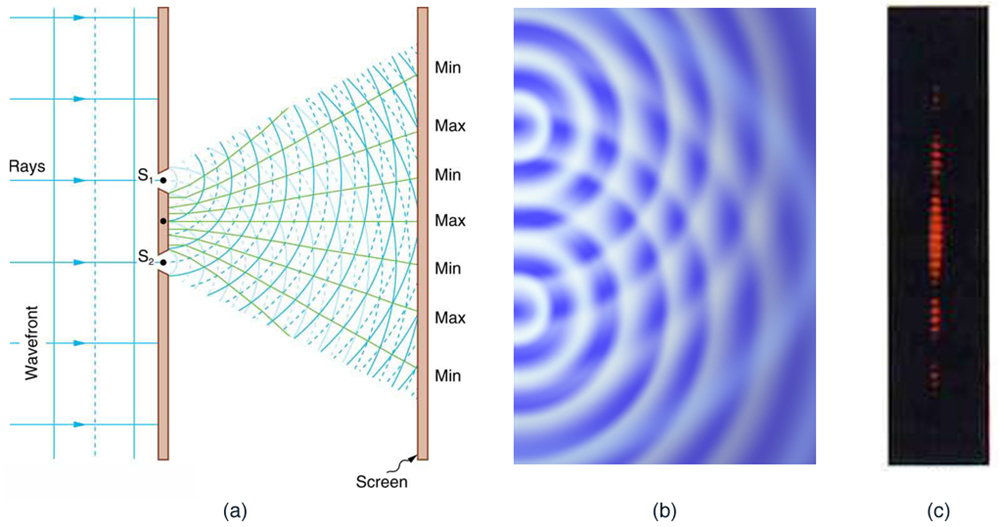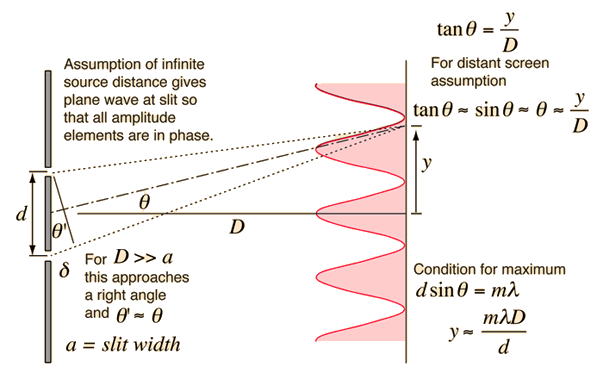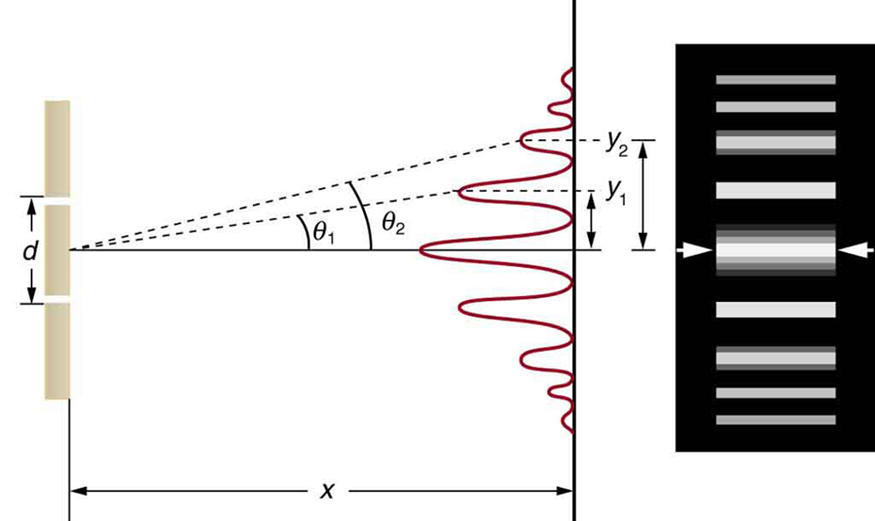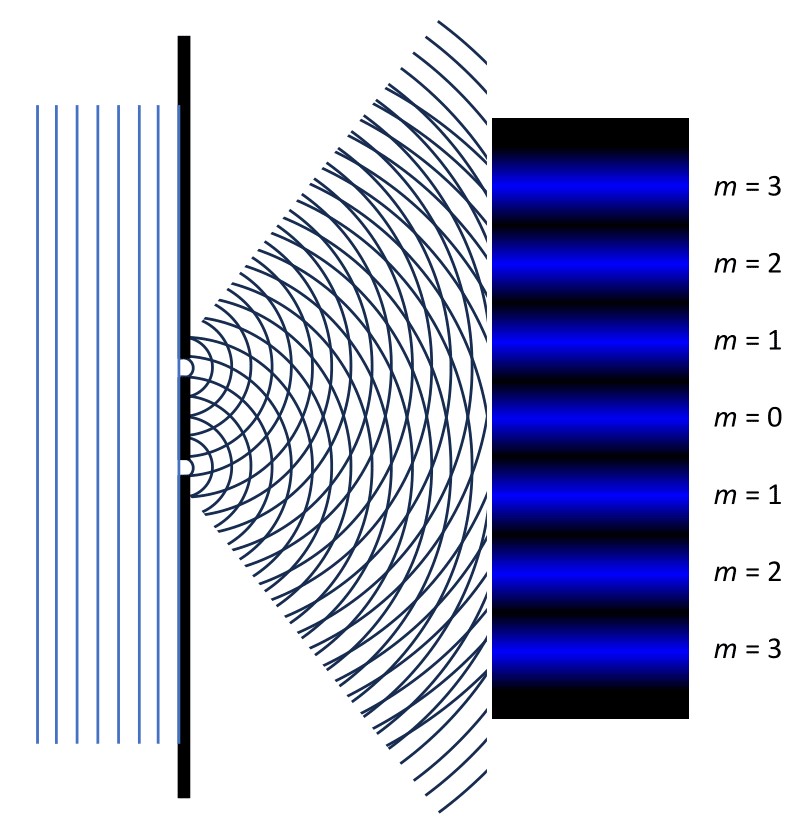The Historical Journey
1801: Thomas Young's Discovery
In the early 19th century, the scientific community was divided between Newton's corpuscular (particle) theory of light and Huygens' wave theory. Thomas Young, an English polymath, devised an ingenious experiment to settle the debate.
Young's original setup involved sunlight passing through a small hole onto a card with two narrow slits cut into it. The light that passed through the slits projected onto a screen, creating alternating bright and dark bands—an interference pattern characteristic of waves.

Young's interference experiment diagram showing wave behavior (Image: Lumen Learning)
1927: Quantum Revelations
Over a century after Young's experiment, the emerging field of quantum mechanics revisited the double slit experiment with new eyes. Physicists discovered that even when individual electrons or photons were sent through the slits one at a time, an interference pattern would gradually build up.
This shocking result suggested that single particles were somehow interfering with themselves, as if each particle was passing through both slits simultaneously and interfering like a wave would. This observation became a cornerstone of the Copenhagen interpretation of quantum mechanics.
Historical recreation of Young's experiment from Cosmos (Credit: Xstream Technique)
1961: The Observer Effect
The plot thickened when physicists added detectors to determine which slit each particle passed through. Remarkably, when the path was observed, the interference pattern disappeared completely, and particles behaved like... well, particles.
This perplexing result suggested that the mere act of observation fundamentally changes the behavior of quantum entities. The wave function—the mathematical description of a particle's quantum state—appears to "collapse" when measured, forcing the particle to commit to a single definite position.
1970s to Present: Ongoing Explorations
The double slit experiment has been performed with increasingly complex particles, from electrons and neutrons to entire molecules like buckyballs (C₆₀)—all showing the same wave-particle duality.
Modern variations like the delayed choice quantum eraser experiment (1999) have added further layers of mystery, suggesting that observation in the present can seemingly affect events that have already occurred in the past.
Today, this experiment continues to inspire debate about the nature of reality, the role of the observer, and the fundamental relationship between consciousness and the physical world.
Richard Feynman, Nobel Prize-winning physicist, explaining the double slit experiment and its profound implications


